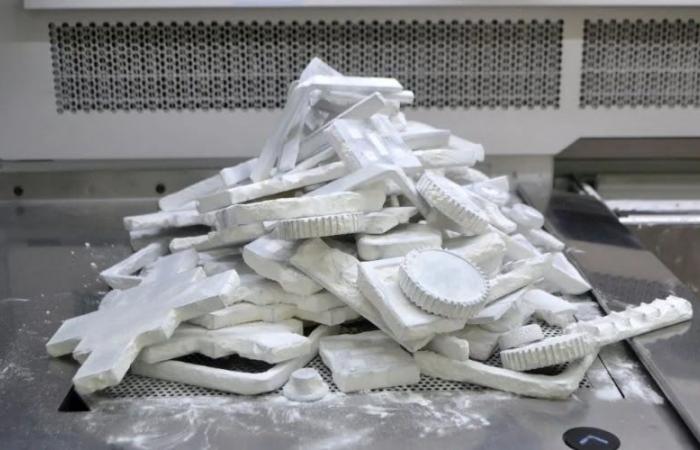A few days ago, the company Protolabs published a report highlighting the latest trends in the additive manufacturing market, in terms of uses, innovations and key figures. The report shows that the printing market will be worth $28.07 billion in 2024 and $57.1 billion in 2028, which is 10.5% faster than previously made estimates. It is undoubtedly good news for the sector as it has experienced some difficulties in recent years. The study also shows that mass production with 3D technologies is now more common and already established, which is not really a surprise after all. Finally, the trends that stand out the most are the development of artificial intelligence, new materials and the combination of additive and subtractive manufacturing.
Although the sector has suffered some slowdowns recently, it appears that growth remains positive, driven in particular by fields that remain dynamic and full of opportunities. An example is the medical sector. The Protolabs study revealed that 77% of participants stated that the medical sector was the market with the greatest potential impact, with SLA 3D printing predominating, which allows for very fine and faithful details. It is also worth noting that the agricultural sector has seen a strong increase in the use of additive manufacturing, mainly FDM. For its part, the transportation sector is the one that creates the most final 3D printed parts.
Industries where additive manufacturing has the greatest impact (photo credit: Protolabs)
If we now look at the applications of additive manufacturing, the Protolabs report is clear: the trend is towards the creation of finished parts in higher volumes. While prototyping remains high (67%), 76% of participants say they have 3D printed more than 10 parts, a figure that only reached 36% in 2020. The study shows that more and more professionals are turning to to additive manufacturing, whatever the process, to create parts in volume, while injection molding used to be the preferred method.
Obviously, there are many factors that influence the choice of the manufacturing method: let’s think about the aftertreatment, the software, and the entire certification and standardization process. These are especially restrictive in the aerospace, medical and automotive industries. But the panorama is changing, and it is clear that the market wants to standardize the process, materials, etc. as much as possible.
Additive manufacturing market trends
A large portion of the Protolabs report is dedicated to industry trends and developments that may influence its evolution. One of the highlights is the work being done on materials for 3D printing. The range of materials has expanded considerably in recent years, with solutions that respond to specific requirements, often by market. In the words of Adam Hecht of the 3DP DIVE design studio: “Companies are designing specific mixtures for 3D printing. “They are creating a lot of materials for very specific applications in 3D printing, whether they are conventional thermoplastics reconfigured for 3D printing, or resins that are not just for prototyping, but for very specialized, high temperature, high elasticity applications.” It is the material that will provide the desired properties to the part, and is a central element of the additive manufacturing workflow that will undoubtedly experience impressive growth in the coming years. It is no coincidence that multi-material 3D printing is developing so strongly.
The main trends identified (Photo credits: Protolabs)
Another trend is artificial intelligence: how can we use this technology to automate our processes, collect data and be more productive? Artificial intelligence could help users adjust their 3D printers, improve their designs, avoid printing errors, etc.
Enfin, on peut noter que la fabrication hybride devrait prendre une place de plus en plus conséquente sur le marché: l’objectif est de combiner tous les avantages de la fabrication additive avec ceux des procédés soustractifs et de permettre une production plus intelligente. Certain machines are developed by these machines and propose these multiple tools. In all cases, there is a tendency to observe the très près that pourrait bien changer nos production modes.
Finally, it is worth noting that hybrid manufacturing could play an increasingly important role in the market. The goal is to combine all the advantages of additive manufacturing with those of subtractive processes, and enable smarter production. Indeed, some machines are being developed in this sense, with multiple tool heads. In any case, this is a trend that must be followed very closely and that could change our ways of producing.
To conclude, the Protolabs report shows quite encouraging results for the additive manufacturing sector, with multiple possibilities and innovations. Without a doubt, the future of additive manufacturing holds great surprises. You can download the full report HERE.
In your opinion, what is the most notable trend in the additive manufacturing sector? Leave your comments on our social networks: Facebook, Twitter and YouTube. Follow all the information about 3D printing in our weekly Newsletter.


